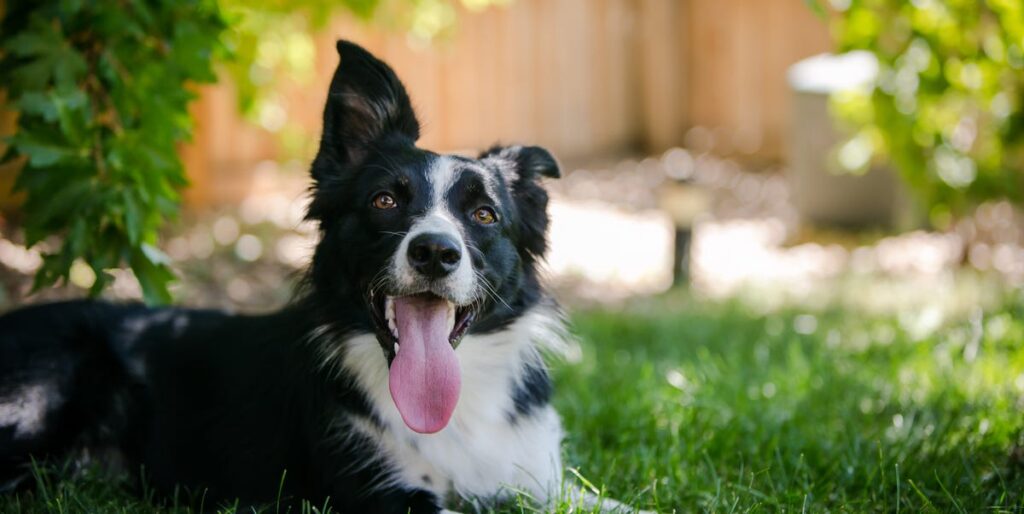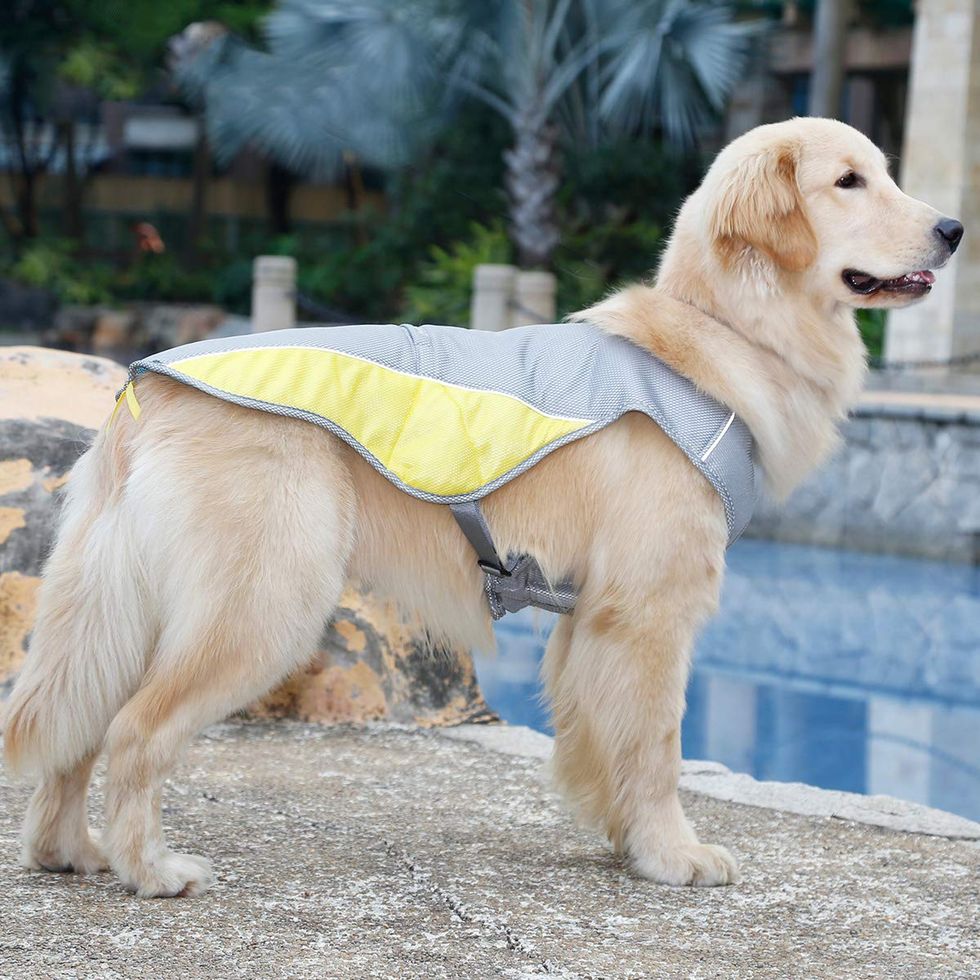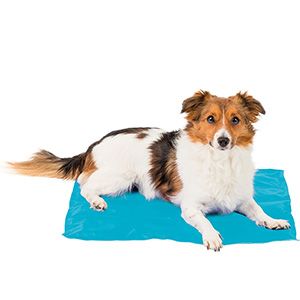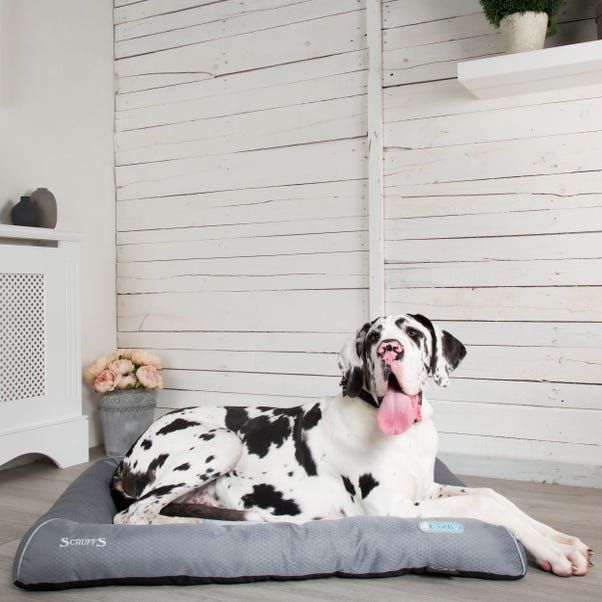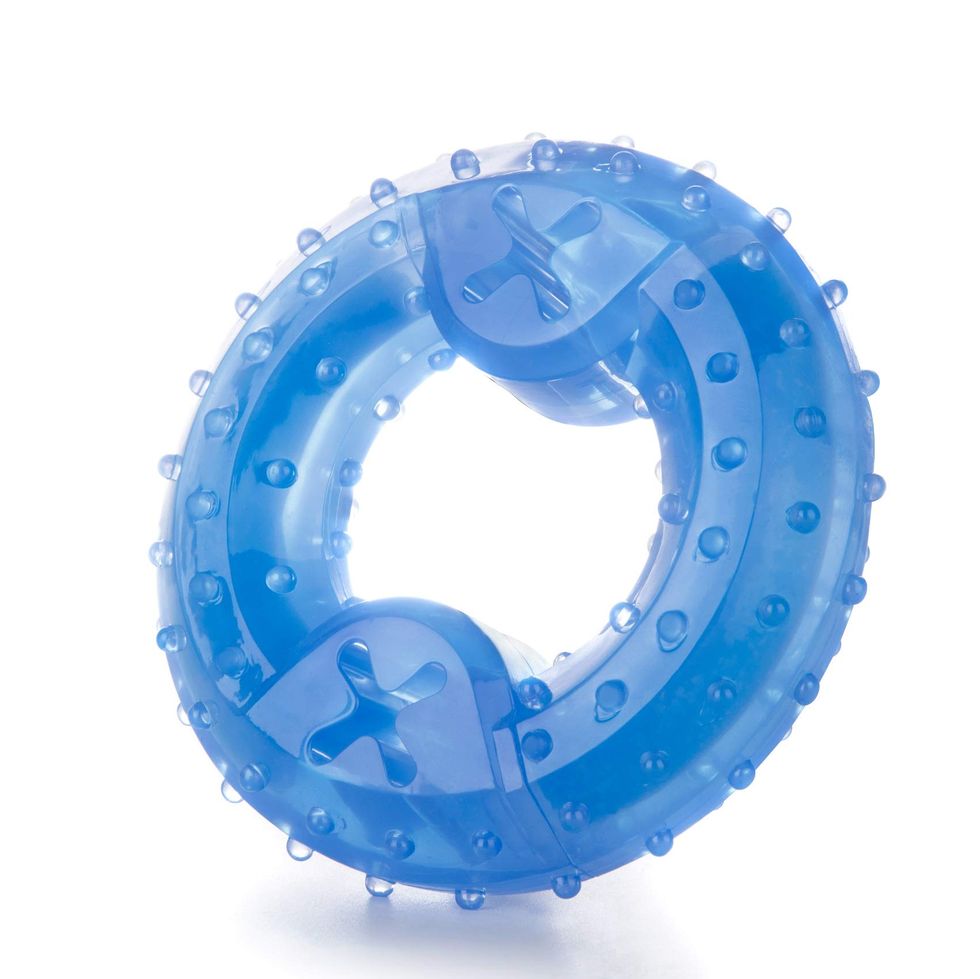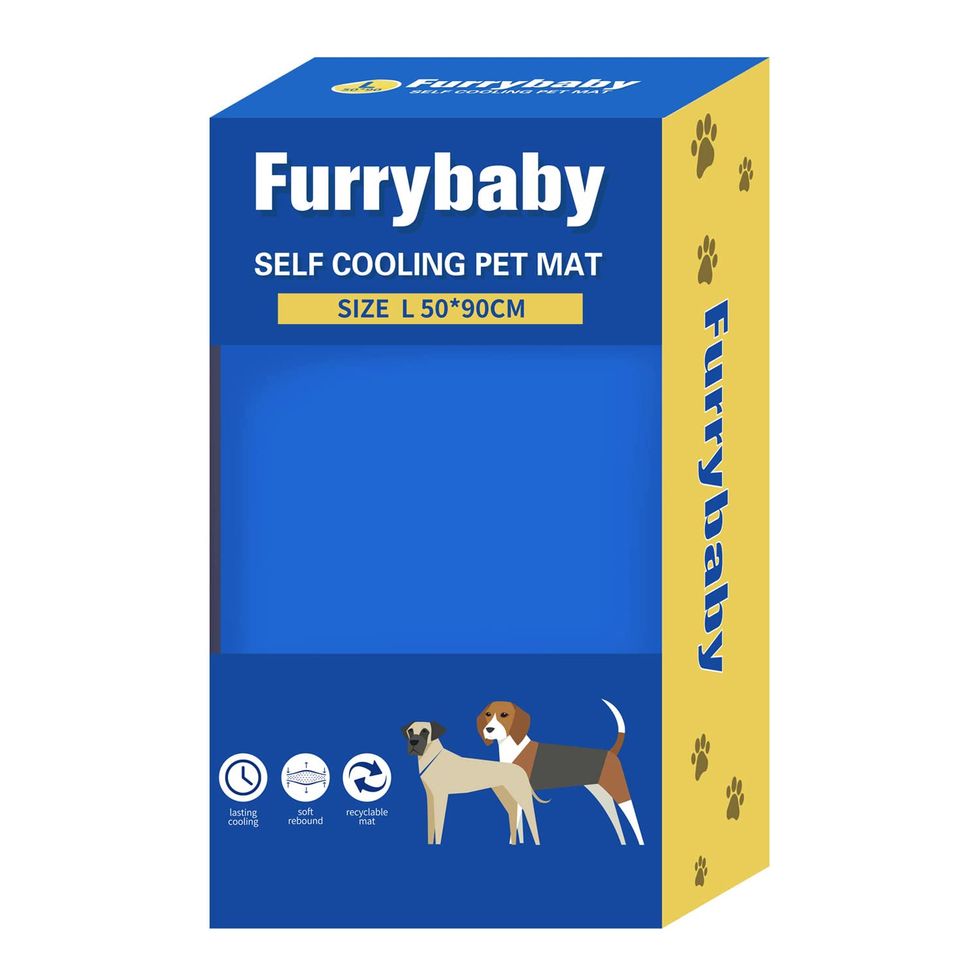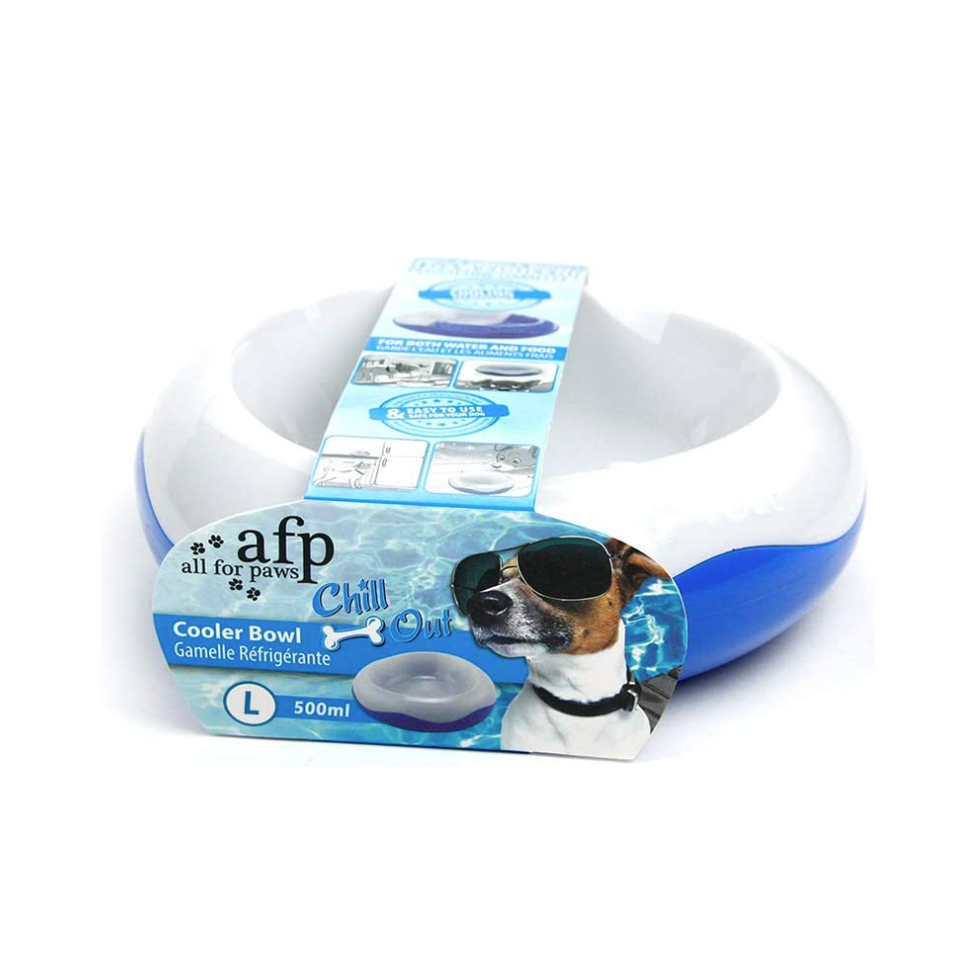Summer is finally here, bringing with it glorious sunshine and long, balmy days. But as temperatures climb into the high 20s over the coming weeks, it’s important to remember that the weather we’ve waited for can pose a threat to our four-legged friends.
As temperatures rise, so does the risk of overheating in dogs – a potentially life-threatening condition pet owners should be aware of.
“A temperature of up to 23°C is fine for dogs to be out and about in. However, with temperatures above 24°C, it starts to get rather dangerous for dogs to be exercised outdoors and if it reaches above 30°C, the dog is at a very high risk of heatstroke,” says dog expert Debby Lucken.
Which dogs are most likely to overheat?
While any dog can develop heatstroke if they are left outside in the sun for too long, a 2020 study, which reported risk factors of heat-related illness in UK dogs, found that some breeds are more susceptible.
This includes brachycephalic (flat-faced and short-snouted) breeds, such as French Bulldogs, Pugs and Boston Terriers. Rachel Rodgers, a clinical animal behaviourist and resident dog expert at Napo pet insurance, explains that these breeds are particularly at risk because of their compromised ability to breathe efficiently.
Thick-coated breeds, like Golden Retrievers and Chow Chows, also have an increased risk of heatstroke, while giant breeds, like Great Danes and Saint Bernards, struggle with temperature regulation, says Rachel.
The same goes for heavy-set or overweight dogs (over 50kg, according to the study), puppies and elderly dogs, as their bodies aren’t as efficient at managing heat.
“As we move into an ever-warmer world, veterinary professionals may need to include resistance to heat-related illness amongst their rationales when advising owners on breed selection,” researchers Emily J. Hall, Anne J. Carter and Dan G. O’Neill write in the abstract of their study.
“Breeding for good respiratory function and maintaining a healthy bodyweight should be considered key welfare priorities for all dogs to limit the risk of heat-related illness.”
How do you check if your dog is overheated?
So, what are the warning signs you should look out for in the coming months? According to Rachel, telling behaviour includes:
Excessive panting: If your dog is panting heavily even while resting, it could be a sign of them overheating. Increased heart rate: Although tricky for owners to detect, this indicates internal overheating.Pale or bright red gums: Dehydration or overheating can be identified by changes in gum colour, and the gums may also feel tacky to the touch.Warm to the touch: Areas like the ears and belly may feel notably warm, especially in puppies.Inability to settle: Pacing or restlessness when the dog should be resting in a cool area can be a warning sign. Also, watch out for foaming at the mouth, signs of confusion or disorientation and, in worst cases, collapsing.
In severe cases, your dog might show stronger symptoms like bloody diarrhoea and vomiting. However, Rachel warns that if you pay close attention to your pup, it shouldn’t get to this stage.
“If you are concerned about your dog’s physical wellbeing or notice any abnormal behaviour, it is crucial to contact your vet immediately. Always prioritise their health and welfare above all else,” she urges.
How can you make sure your dog stays cool?
During the height of summer, avoid walking in the heat. Opt for early morning strolls, and never leave your dog in a car, even for a moment.
This will help prevent them from overheating. Additionally, Rachel shares some practical ways you can cool your pup down:
Block out the sun: Keep curtains drawn during the day and stop dogs from entering conservatories or sun-trapped rooms. “Never leave them in these spaces unattended,” says Rachel. In outdoor spaces, set up shaded areas with parasols or umbrellas.Wet towels or cooling mats: Putting wet towels or cooling mats on the floor is a great and easy hack, as it offers a cool surface for your dog to lie on. Just make sure they stay wet to be effective; otherwise, cooling mats in particular may actually increase your dog’s body temperature.Air conditioning: Use fans or air conditioning to circulate cool air and prevent hot air from getting trapped.Cool treats: Make sure to regularly replace your dog’s water and consider making them frozen yoghurt treats. (Rachel keeps her freezer stocked for her own pup, Pebbles.)Water play: Encourage your dog to splash around in cool water. Paddling pools, for example, are a fun and effective way to cool down, but you could also take your pooch to a lake or stream.
What should you do if your dog has heatstroke?
Dogs with heatstroke need immediate help and will urgently need to have their body temperature lowered gradually for the best chance of survival. You need to:
Move the dog to a shaded areaAllow your dog to drink some cool waterImmediately pour cool (not cold to avoid shock) water over the dog. Tap water (15-16°C) has been found to be the most effective at cooling dogs with heat-related illnesses. In a true emergency, any water is better than nothing,” advises the RSPCAThroughout the treatment of heatstrok,e try to avoid pouring water on or near your dog’s head, as there is a risk of them inhaling water, which could lead to drowning, especially for flat-faced and unconscious dogsOnce your dog has cooled down, take them to the nearest vetAvoid putting a wet towel over your dog as this can end up trapping the heat. If your dog is still overheating, consider placing a wet towel underneath them
Always make sure to consult your vet about health-related issues.
Deputy Daily Editor, Country Living and House Beautiful
Lisa Joyner is the Deputy Daily Editor at House Beautiful UK and Country Living UK, where she’s busy writing about home and interiors, gardening, dog breeds, pets, health and wellbeing, countryside news, small space inspiration, and the hottest properties on the market. Previously, she has written for Conde Nast Traveller, House & Garden and Marie Claire magazine. Lisa studied at University For The Creative Arts, where she completed a BA in Fashion Journalism.
Wanda Sachs is the Daily Writer for House Beautiful and Country Living, exploring the latest in interior design, home trends, property news, wellbeing and sustainable living. With a keen eye for style and a passion for storytelling, she previously served as an Associate Editor at The Berliner in Berlin, where she launched and led the magazine’s monthly style vertical, covering emerging fashion trends. Wanda holds a combined BA in English and German from Goethe University Frankfurt.


